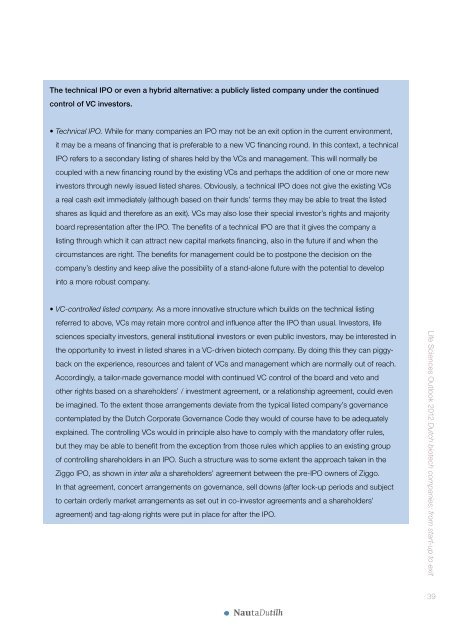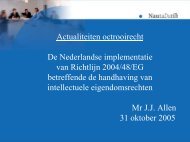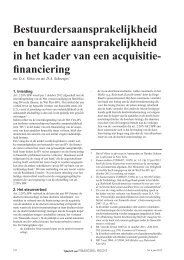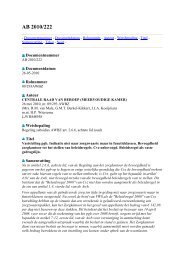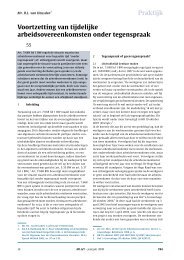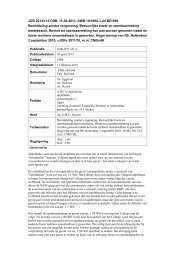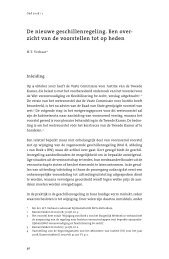Life Sciences Outlook 2012 Dutch biotech companies ... - NautaDutilh
Life Sciences Outlook 2012 Dutch biotech companies ... - NautaDutilh
Life Sciences Outlook 2012 Dutch biotech companies ... - NautaDutilh
You also want an ePaper? Increase the reach of your titles
YUMPU automatically turns print PDFs into web optimized ePapers that Google loves.
The technical IPO or even a hybrid alternative: a publicly listed company under the continued<br />
control of VC investors.<br />
• Technical IPO. While for many <strong>companies</strong> an IPO may not be an exit option in the current environment,<br />
it may be a means of financing that is preferable to a new VC financing round. In this context, a technical<br />
IPO refers to a secondary listing of shares held by the VCs and management. This will normally be<br />
coupled with a new financing round by the existing VCs and perhaps the addition of one or more new<br />
investors through newly issued listed shares. Obviously, a technical IPO does not give the existing VCs<br />
a real cash exit immediately (although based on their funds’ terms they may be able to treat the listed<br />
shares as liquid and therefore as an exit). VCs may also lose their special investor’s rights and majority<br />
board representation after the IPO. The benefits of a technical IPO are that it gives the company a<br />
listing through which it can attract new capital markets financing, also in the future if and when the<br />
circumstances are right. The benefits for management could be to postpone the decision on the<br />
company’s destiny and keep alive the possibility of a stand-alone future with the potential to develop<br />
into a more robust company.<br />
• VC-controlled listed company. As a more innovative structure which builds on the technical listing<br />
referred to above, VCs may retain more control and influence after the IPO than usual. Investors, life<br />
sciences specialty investors, general institutional investors or even public investors, may be interested in<br />
the opportunity to invest in listed shares in a VC-driven <strong>biotech</strong> company. By doing this they can piggyback<br />
on the experience, resources and talent of VCs and management which are normally out of reach.<br />
Accordingly, a tailor-made governance model with continued VC control of the board and veto and<br />
other rights based on a shareholders’ / investment agreement, or a relationship agreement, could even<br />
be imagined. To the extent those arrangements deviate from the typical listed company’s governance<br />
contemplated by the <strong>Dutch</strong> Corporate Governance Code they would of course have to be adequately<br />
explained. The controlling VCs would in principle also have to comply with the mandatory offer rules,<br />
but they may be able to benefit from the exception from those rules which applies to an existing group<br />
of controlling shareholders in an IPO. Such a structure was to some extent the approach taken in the<br />
Ziggo IPO, as shown in inter alia a shareholders’ agreement between the pre-IPO owners of Ziggo.<br />
In that agreement, concert arrangements on governance, sell downs (after lock-up periods and subject<br />
to certain orderly market arrangements as set out in co-investor agreements and a shareholders’<br />
agreement) and tag-along rights were put in place for after the IPO.<br />
<strong>Life</strong> <strong>Sciences</strong> <strong>Outlook</strong> <strong>2012</strong> <strong>Dutch</strong> <strong>biotech</strong> <strong>companies</strong>: from start-up to exit<br />
39


